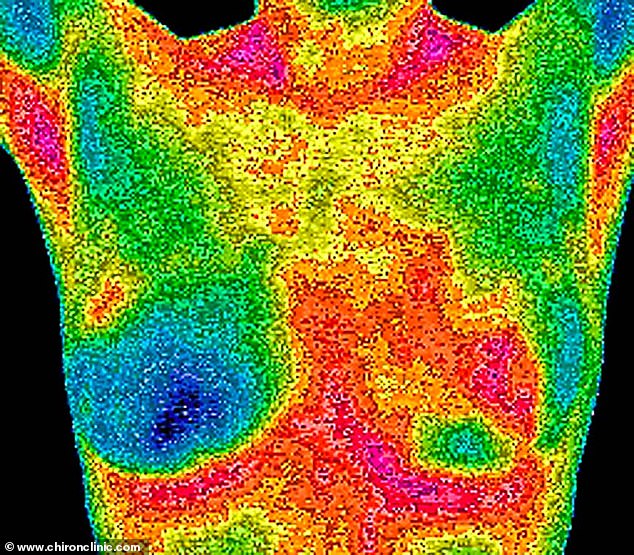It’s not all bad! AI can slash the wait for new drugs
Depending on who you ask, artificial intelligence (AI) is either a revolutionary force for good – or a threat to our existence.
Defined by the Oxford English Dictionary as the ability of computers or machines to “exhibit or simulate intelligent behavior,” AI was recently described by academics and bosses of major tech companies, including Google, as an equally grave threat to human survival like a nuclear war.
The fear is that AI could spread disinformation on such a scale that it would lead to complete social collapse.
In stark contrast, hardly a week goes by without news of AI potentially transforming our health.
For example, researchers at Lund University in Sweden recently revealed that the technology increased the detection of breast tumors found through screening by 20 percent.
Experts believe AI will also shave years off the time it takes to get new drugs to market (stock photo)
The study compared the results of thousands of breast scans checked visually by two radiologists on a screen (the current NHS screening method) with the results when the same scans were checked by a computer program – and then confirmed the results with biopsies.
The results, published in The Lancet Oncology, showed that conventional checks found 203 cases of cancer – but AI discovered a further 41 cases.
AI is thought to improve detection because it eliminates the risk of tired, overworked radiologists missing vital signs of a tumor.
Experts believe AI will also shave years off the time it takes to get new drugs to market.
Currently this could take ten years and cost at least £1 billion; even then, 90 percent of new drugs fail safety and effectiveness tests.
But using AI to sift through mountains of data on the structure or DNA profile of millions of molecules to see if they’re suitable for a new drug could mean new treatments will be available to patients within five years, say experts.
“Artificial intelligence can analyze hundreds of millions – even billions – of (molecules) in less time than existing software,” says Dr Philip Crilly, senior lecturer in digital pharmacy and public health at Kingston University in Surrey.
‘It’s about the amount of data and also the speed at which it gets through. Many screening tools currently in use cannot read through the really complex big data because they are not advanced enough.”
Earlier this year, pharmaceutical company Insilico Medicine announced phase 2 trials (to check effectiveness in a small number of patients) of a drug it developed from scratch using AI in just over two years – less than half of the time it would normally take to obtain a drug. brand new drug to this stage.

A breast scan using a technology called thermography, used at the Chiron clinic in Harley Street
The drug is a potential new treatment for idiopathic pulmonary fibrosis (IPF) – an incurable lung condition that affects around 32,000 people in Britain, where the tissue in the lungs becomes thick and inflamed. Currently, most IPF patients survive only three to five years after diagnosis.
Besides pure computing power, the other ‘skill’ of AI is that it learns from previous decisions or interactions – such as when streaming music, where your app remembers which artists or songs you’ve searched for and ‘learns’ to recommend similar songs that you might like. This ability proves especially useful when it comes to pharmaceutical companies determining whether a new drug will be safe.
‘It can analyze millions of compounds for compounds with similar characteristics to the potential new drug a company may be interested in,’ says Dr Crilly.
By pooling data from similar molecules and their known effects, AI software can predict whether the new drug is likely to harm patients.
An estimated 30 percent of experimental drugs fail initial testing because they are found to be potentially toxic.
‘It means pharmaceutical companies can recognize much earlier in the process whether there is likely to be a problem (with the safety of a new drug) and move away from it sooner, potentially saving them hundreds of millions of pounds,’ says Dr Crilly.
In February, researchers from the University of Sheffield announced that they had teamed up with scientists from AstraZeneca to develop an AI package – called DrugBAN – that can predict whether a drug candidate will interact with its target organs or tissues as hoped.
The computer program is trained to learn the structure of millions of proteins in the human body – as well as the structure of potential new drug compounds. It then “learns” how these structures interact and predicts whether a drug is likely to have the desired effect, or whether it will be too toxic to use, long before it has entered the testing phase.
Yet there is an underlying problem with AI in drug development, warns Penny Ward, visiting professor of pharmaceutical medicine at King’s College London: much of the information AI relies on to make drug development decisions comes from research that has already been published.
But a long-standing problem – positive publication bias – means that negative research results are less likely to be published than positive ones, distorting the evidence.
“This is either because editors only want to publish positive things, or because researchers are wary of negative findings on their academic track record,” says Professor Ward.
“This is a weakness because AI is only as good as the data it feeds.”
